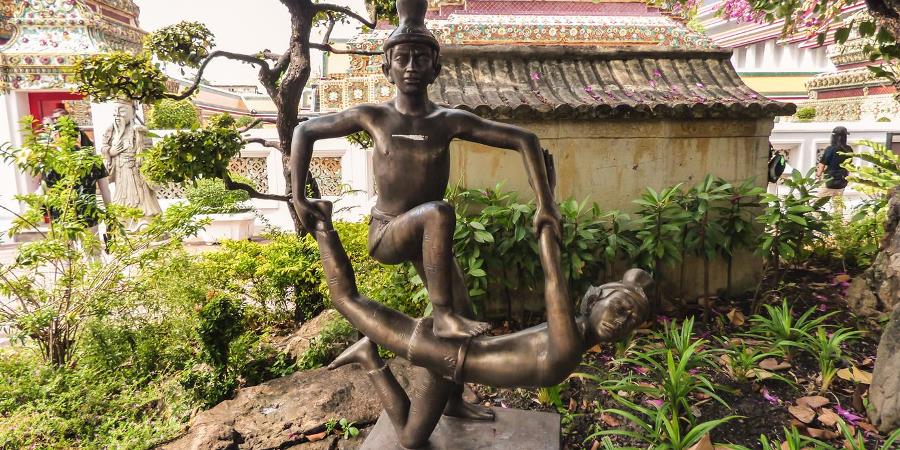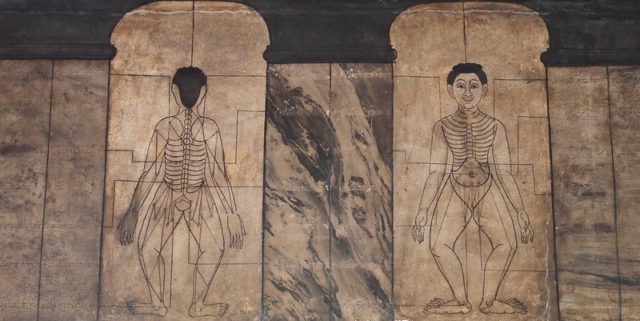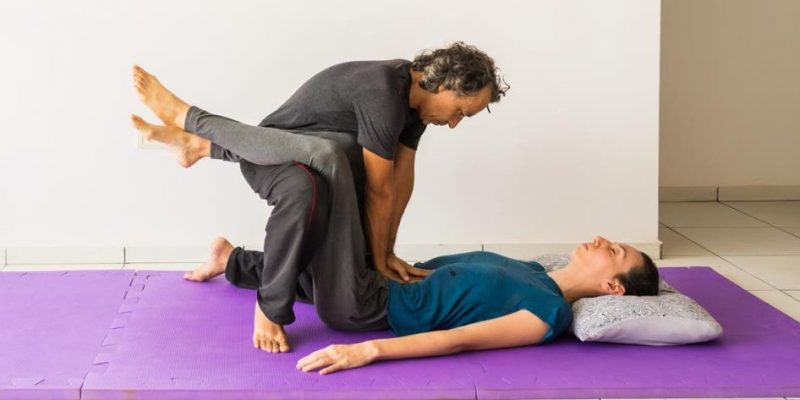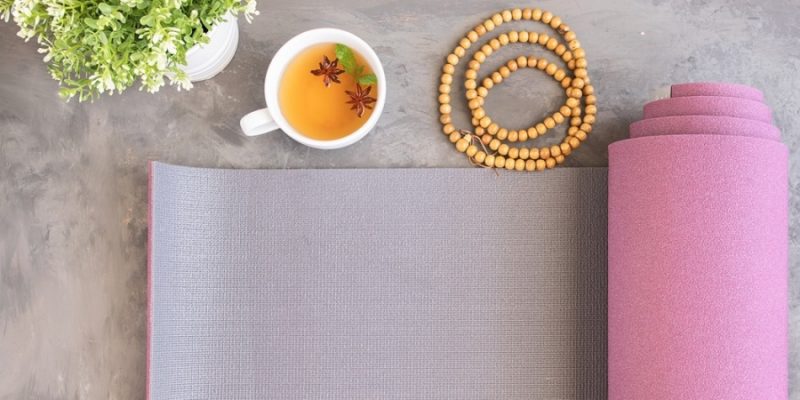
Thai Massage and Ayurvedic Abhyanga Massage are actually quite different types of massage treatment modalities, although there are also a few similarities.
In this post, we’ll take a look at what unites them, and at the things that make them rather different from each other.
Similarities of Thai Massage and Abhyanga
First of all, both types of massages emerged in Asia — in Thailand and India respectively — and are prominent in their own traditional, indigenous medicine systems as a therapeutic healing modality.

Both treatment modalities have a very long history, probably already millennia, but most certainly several hundred of years.
Thai Massage and Abhyanga are usually carried out as full body massages, with a holistic approach of treatment, and both modalities have spiritual connotations that are integrated with local religious beliefs.
Another interesting similarity is constituted by the origins of Thai Massage, which partially lies in India, in Ayurvedic and Yogic systems. For instance, the Indian Pancha Kosha system heavily influences the concept of the “energy body” in Thai Massage, as well as the ideas around Prana Life Energy and Lom Pran.
Differences between Thai Massage and Abhyanga
One of the key differences is the fact that Thai Massage is traditionally a clothed massage without the application of oils, lotions or creams, while Abhyanga Massage is a partially unclothed, (medicated) herbal oil massage. In fact, the use of a large variety of oils for health benefits plays a crucial role in Ayurvedic Abhyanga.

Thai Massage is performed on the floor on a mat, but Abhyanga Oil Massage is typically performed on a massage table or any other elevated construction.
Massage techniques used within Abhyanga are primarily stroking and kneading, while Thai Massage incorporates a lot of acupressure, hand palming, and stretches.
Conceptually, Ayurvedic Abhyanga is strongly influenced by the TriDosha theory, while Thai Massage primarily leans on the so-called Sip Sen Energy Channels theory. In general, Abhyanga focuses on balancing the three Doshas, while Thai Massage aims at balancing the energy flow in the body.














